If you’ve ever wanted to grow a carnivorous plant but don’t know the right species to go for, this post is for you. We discussed the various types of carnivorous plants as well as how to care for them.
Bugs eat plants, but the reverse is the case for carnivorous plants, yes! You thought right; carnivorous plants eat bugs and even other plants; probably this is why they are referred to as the celebrities of the plant world.
Many carnivorous plant varieties are generally herbs, and their traps are produced by primary growth, and they do not easily form structures such as thick bark or wood.
It is also commonly believed that carnivorous plants/carnivory originated as a result of very nutrient-poor conditions.
Table of Contents
What are Carnivorous Plants? | Origin Of Carnivorous Plants
Carnivorous plants are hardy in the United States Department of Agriculture zones 6 through 9. Carnivorous plants can be found on every continent around the world except Antarctica and most pacific islands.
Many species originated from the UK, such as bladderworts, sundews, and butterworts. Some carnivorous varieties are also native to North America, including pitcher plants, butterworts, sundews, and bladderworts.
Carnivorous plants are sometimes called insectivorous plants; this is because these plants are especially adapted for capturing and digesting insects and other arthropods by trapping them cleverly.
They trap and digest small prey as a way of supplementing their nutrient requirements, mostly in poor soil conditions; this is because these plants have adapted to grow in places where the soil is thin or poor in nutrients, especially nitrogen.
The various ways in which carnivorous plants capture their prey range from the pitfall traps of pitcher plants to the adhesive leaves of sundews and butterworts and then to the snap traps of venus flytraps and waterwheels.
Carnivorous plants tend to grow in areas where the soil is very thin and lacks the necessary nutrients to thrive. To survive, these plants must find other sources for this essential nutritional value.
Their most common means of survival is their ability to transform insects into digestible nutrients through acidic environments similar to a human stomach. Fascinating, isn’t it?
Carnivorous plants live in high-light and water habitats but have extremely low soil nitrogen and phosphorus; this is why they seek other forms of gaining nutrients by eating plants and other small animals.
As scary as this sounds, whether you’re already a pro gardener, looking to add more variety to your plant collection, or you are just starting to appreciate plants, you should probably consider any beautiful type of carnivorous plant.
Hey, I know what you’re thinking, but don’t worry, their prey does not include humans or bigger animals.
Read Also: Different Types of Succulents
Benefits of Carnivorous Plants
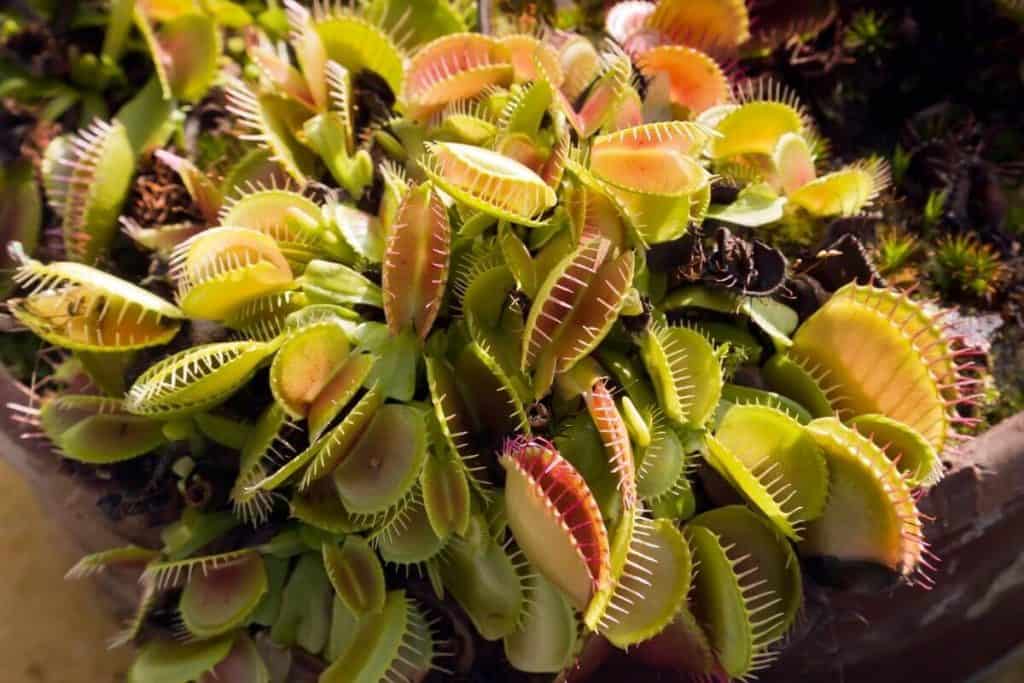
In fact, apart from being a decorative plant in your home, there is another advantage I can think of, and you know what that is? The carnivorous plant of your choice can also double as an insecticide/pesticide.
Weird, right? I know, but with the plant in your home, you do not have to worry much about unwanted insects living in small spaces in your home.
Now, carnivorous plants have evolved independently, nine times in five different orders of flowering plants, and more than a dozen genera represent it.
This classification includes over 630 known species of carnivorous plants, which make up a very diverse group, in some cases having little more in common than their carnivorous habit.
And of course, we will show you some of the most popular species, exactly where they live, how they trap their prey, and how they survive.
Where Do Carnivorous Plants Live?
The habitats of the different types of carnivorous plants vary, but they usually involve wet, low-nutrient sites, including bogs, swamps, water bodies, watercourses, forests, and sandy or rocky sites.
As I stated earlier, many species of carnivorous plants are native to the UK, including sundews, butterworts, and bladderworts.
Common butterwort (Pinguicula Vulgaris) grows throughout the UK on bogs, fens, wet heaths, and moors. This plant uses the sticky mucilage on the surface of the leaf to trap its prey.
Purple blossoms appear on top of a long stalk to help keep pollinators from their carnivorous leaves.
Attenborough's pitcher plants (Nepenthes attenboroughii) are only found near the summit of Mount Victoria on the island of Palawan in the Philippines, so, therefore, these species are critically vulnerable.
Pitcher plants are one of the largest of all types of carnivorous plants; it grows 1.5 meters tall and produces pitchers that are 30 centimeters in diameter - and it is also capable of digesting rodents.
Read Also: Types of Plants in the Rainforest
Trapping Mechanisms Of Carnivorous Plants
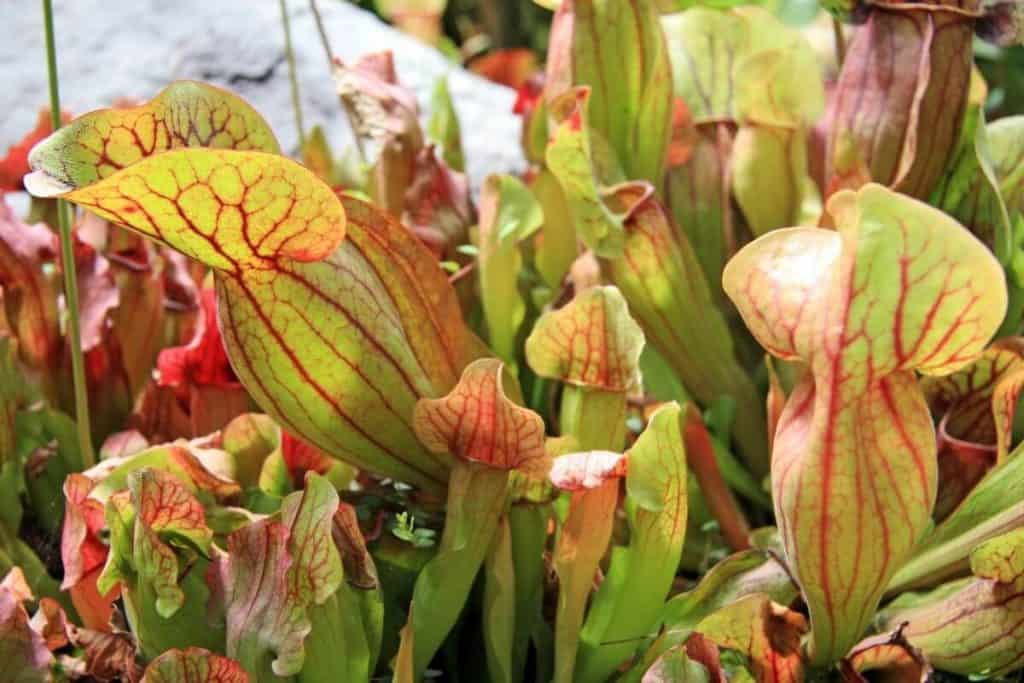
There are five basic trapping mechanisms found in carnivorous plants.
1. Pitfall traps: (pitcher plants) trap prey in a rolled leaf that contains a pool of digestive enzymes.
Pitfall traps, such as those found in pitcher plants, are among the most common types of traps, and they use a hollow, lidded leaf filled with liquid to collect and digest their prey.
2. Flypaper traps: Use sticky mucilage.
Flypaper traps can be active or passive and rely on sticky mucilage, either directly on the leaf surface (butterworts) or on gland-tipped hairs (sundews), to capture their prey.
3. Snap traps: Utilise rapid leaf movements.
Snap traps, such as those of the Venus flytrap (Dionaea muscipula), use rapid leaf movements to actively capture insects.
This actually reminds me of when people use the phrase ‘with just a snap of fingers’indicating an event that happened really fast.
4. Bladder traps: Suck in their prey with a bladder that generates an internal vacuum.
Bladder traps are only found in bladderwort plants (genus Utricularia), hence the name, and they actively suck in small organisms using a partial vacuum.
5. Lobster-pot traps (also known as eel traps): They are found mainly in corkscrew plants (genus Genlisea), and they have hairs that are pointing inwardly, which they use to force their prey to move towards a digestive organ.
Digestion Mechanism Of Carnivorous Plants
Carnivorous plants digest their prey using enzymes or bacteria. They achieve this by a chemical breakdown that is similar to digestion in animals.
The end products, which are usually nitrogenous compounds and salts, are absorbed by the plants to enable their survival under poor nutrient conditions.
Most carnivorous species are green plants that manufacture food by photosynthesis from the raw materials of sunlight, water, and carbon dioxide in the presence of chlorophyll.
Their carnivorous nature adds to the diet derived from the poor soil of their environment.
Without further ado, let’s talk about some of the types of carnivorous plants.
Different Types Of Carnivorous Plants
1. Venus Flytrap (Dionaea muscipula)
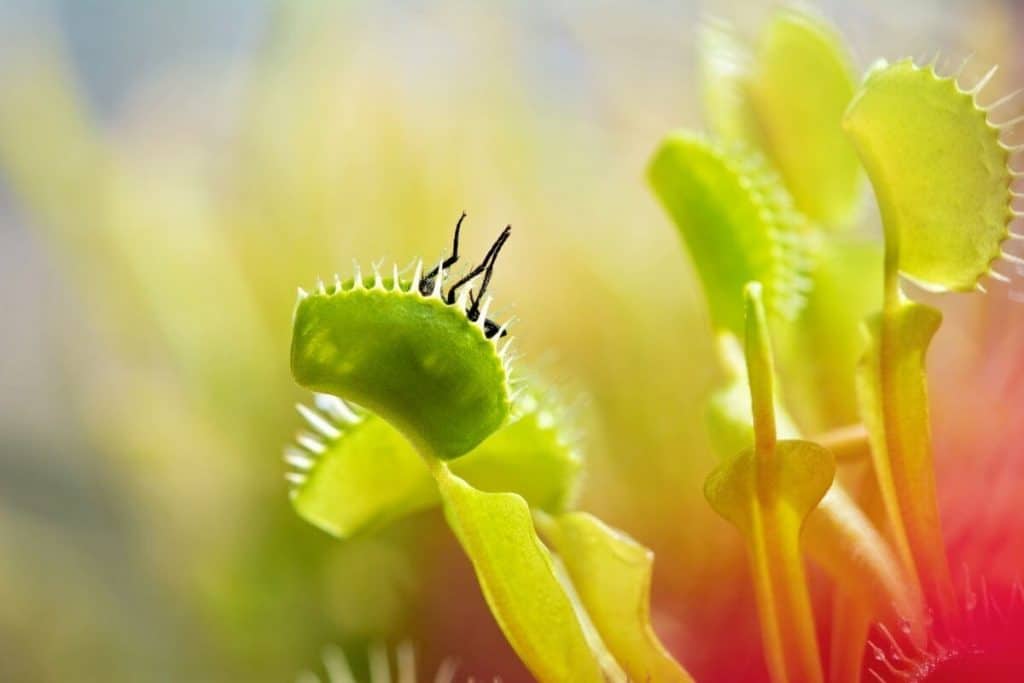
This is the most common of all insect-eating plants. The Venus Fly Trap is found in North Carolina and South Carolina subtropical wetlands and is relatively small, only half a foot in length.
Its unique “jaws” can be triggered by flies and other small insects landing on them, and then they close in on their prey.
Once it closes its jaws on the unlucky insect, the Venus Fly Trap secretes certain enzymes that break down the insect's body into a nutrient-rich liquid that the plant can digest.
Wait…., there is a catch, and you would love it!…, the trap will only close if an insect touches two different interior hairs (trigger hairs or sensitive hairs) in the course of 20 seconds; if not, the trap remains open.
Related Post: Types of Plants in the Ocean
2. Tropical Pitcher Plant (nepenthes alata)
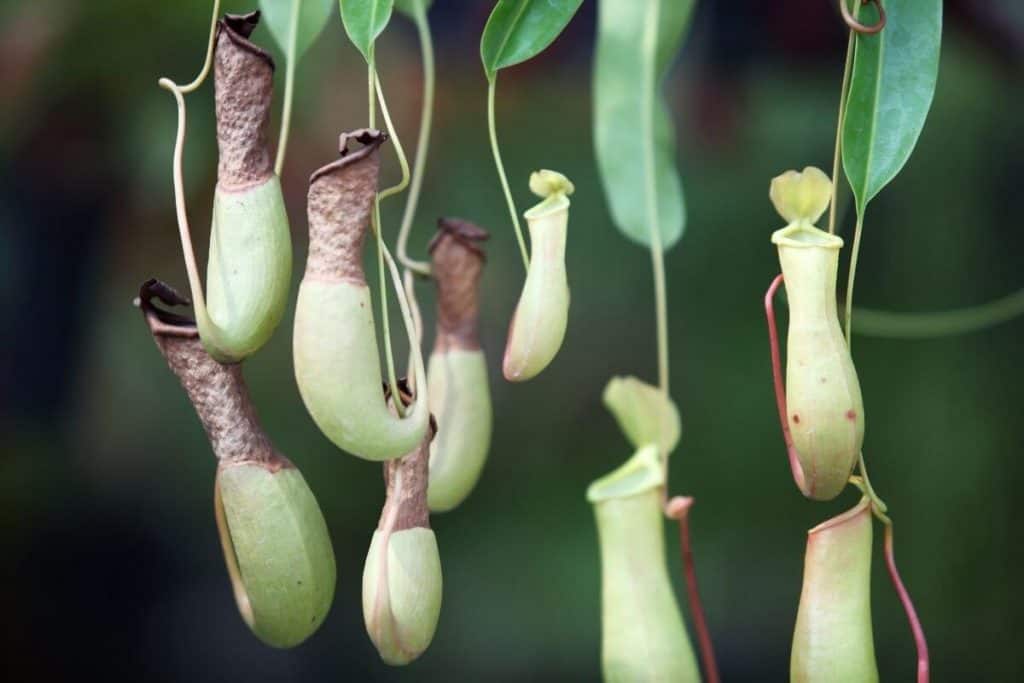
The tropical pitcher plant has leaves that resemble champagne flutes that are capable of catching and trapping flies and other insects in their stomach. The main attribute that makes the tropical pitcher plant stand out is its enormous size.
They are found in the eastern hemisphere, mostly in Madagascar, Southeast Asia, and Australia.
Due to its massive size, this carnivorous plant can catch and digest not only insects but also small lizards, amphibians, and even small mammals.
These animals are attracted to the plant’s sweet-scented nectar in the center and are compelled into falling in. Once they’re in the pitcher, digestion can take as long as two months.
3. Portuguese Sundew (Drosophyllum lusitanicum)
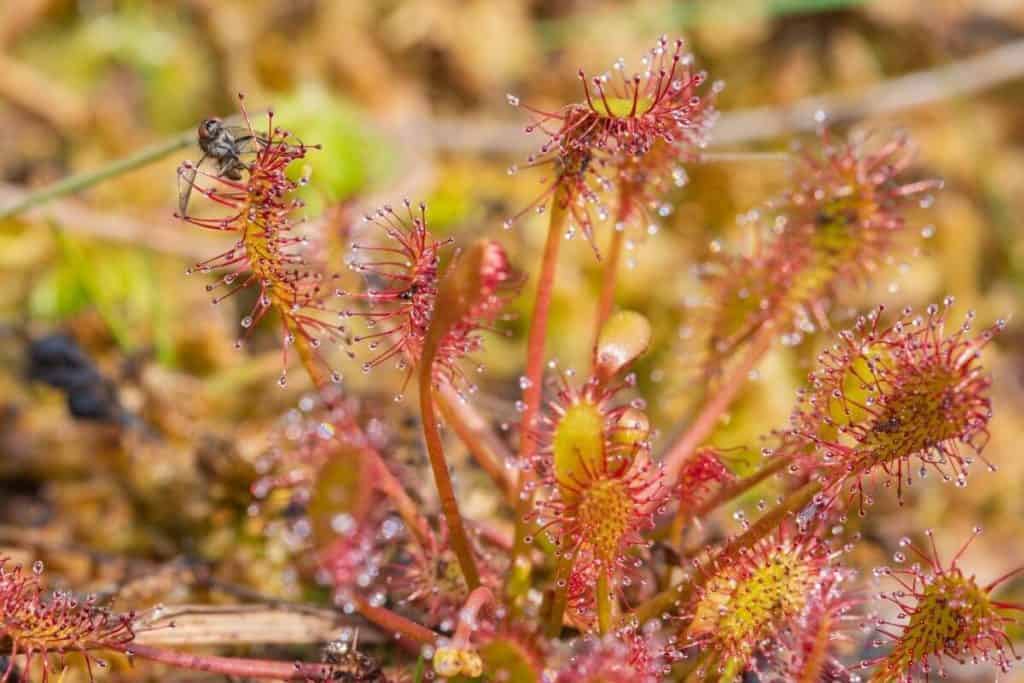
The Portuguese Sundew or Dewy Pinegrows along the coasts of Spain, Portugal, and Morocco.
Similar to the Pitcher Plant, the Sundew also attracts insects with sweet-smelling nectar that lures them to the plant and eventually traps them.
But unlike the Pitcher Plant, there is no internal aspect for the insects to be digested in.
Instead, the plant secretes a sticky substance called mucilage on its leaves that traps the insects, and then when it senses the bug, it secretes digestive enzymes that slowly dissolve the insects and extract those essential nutrients.
4. Bladderworts Plant (Utricularia)
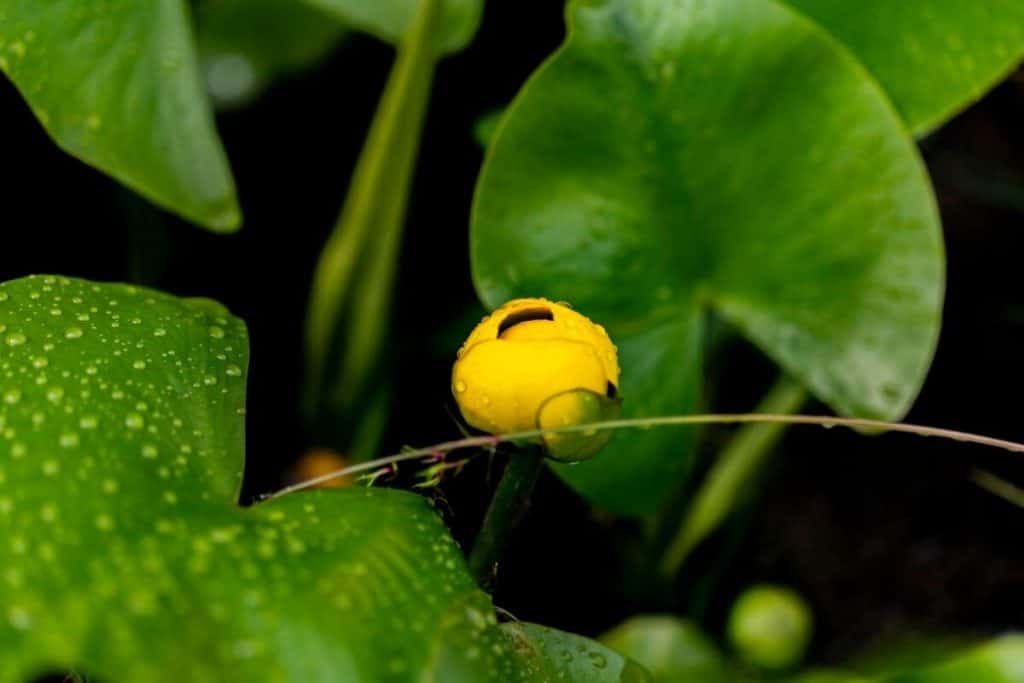
Bladderworts capture small organisms by means of bladder-like traps. They occur in freshwater and wet soil.
Their primary type of prey are fleas and other tiny insects that unknowingly land on the plant.
When the insect lands on the plant, this triggers the flattened bladder to suddenly inflate, thereby sucking in the surrounding water and bringing the insects in with it.
As it inflates, the flap closes in on it, which makes an effective trap door to keep the insects inside while digesting.
Read Also: Types of Peperomia
5. Cobra Lily Plant (Darlingtonia californica)
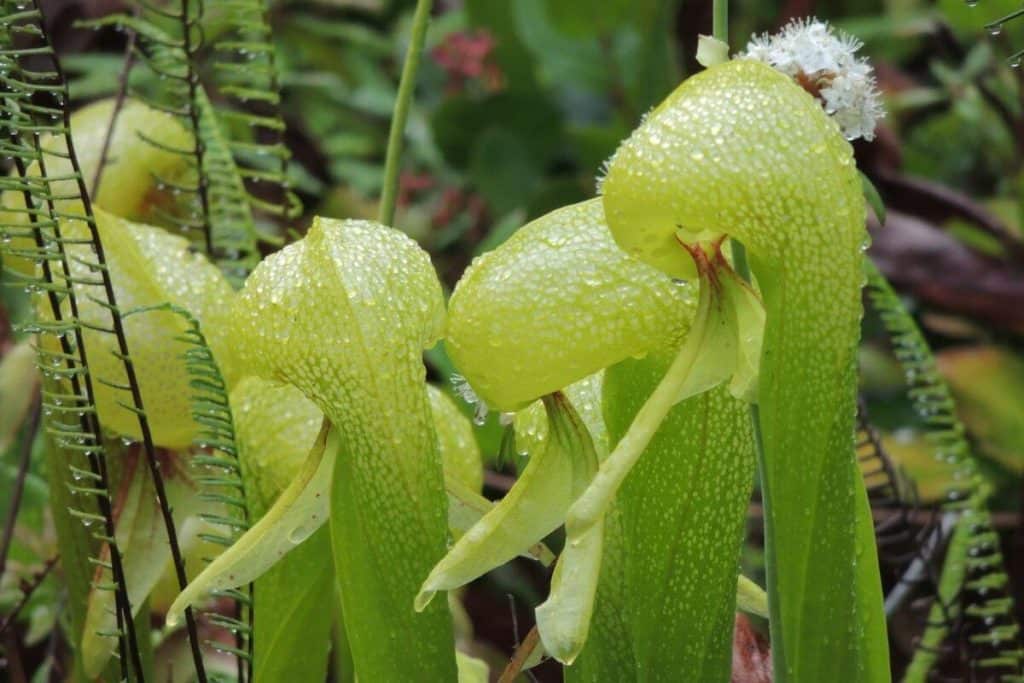
Also known as California Pitcher Plant or Cobra Plant, Cobra Lily is native to Northern California, Oregon, and the U.S; it grows in bogs and seeps with cold running water.
The Cobra Lily gets its name from its resemblance to a cobra snake that is about to strike. It is also sometimes referred to as the Lobster-pot Plant for the way it looks like the pots fishermen use to catch lobsters.
It is smaller than the pitcher plant but operates on a similar mechanism of using sweet-smelling nectar to lure insects into its stomach.
This plant has pitchers which have tiny windows in them. These windows are false exits for the insects that happen to fall inside and are used to exhaust them with fruitless escape attempts until they are digested by the plant.
It also has tiny overlapping hairs on the inside that force the prey to go further down and into the digestive fluids.
6. Butterwort Plant (Pinguicula)
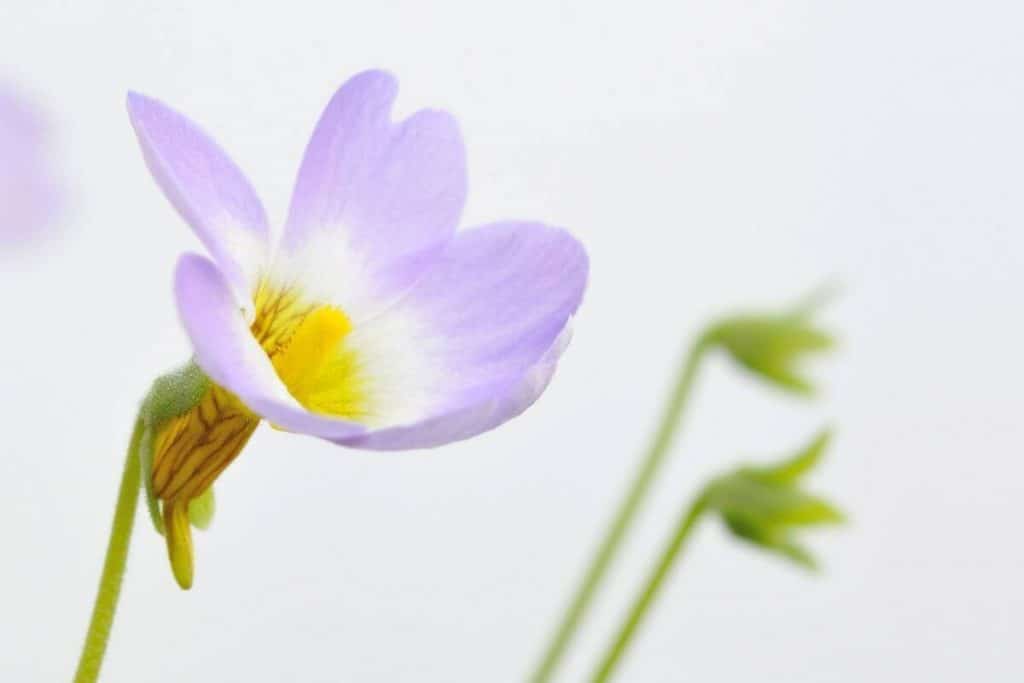
Butterwort is a genus of the carnivorous flowering plants in the family Lentibulariaceae. Their leaves look like they have been coated with butter, hence the name.
Butterworts are native to Europe, North America, northern Asia, South, and Central America.
They use their sticky, glandular leaves to lure, trap, and digest insects. Once the insects are stuck, the plant secretes digestive enzymes, which sucks the bugs dry.
Read Also: Types of Moss Plant
7. Waterwheel Plant (Aldrovanda vesiculosa)
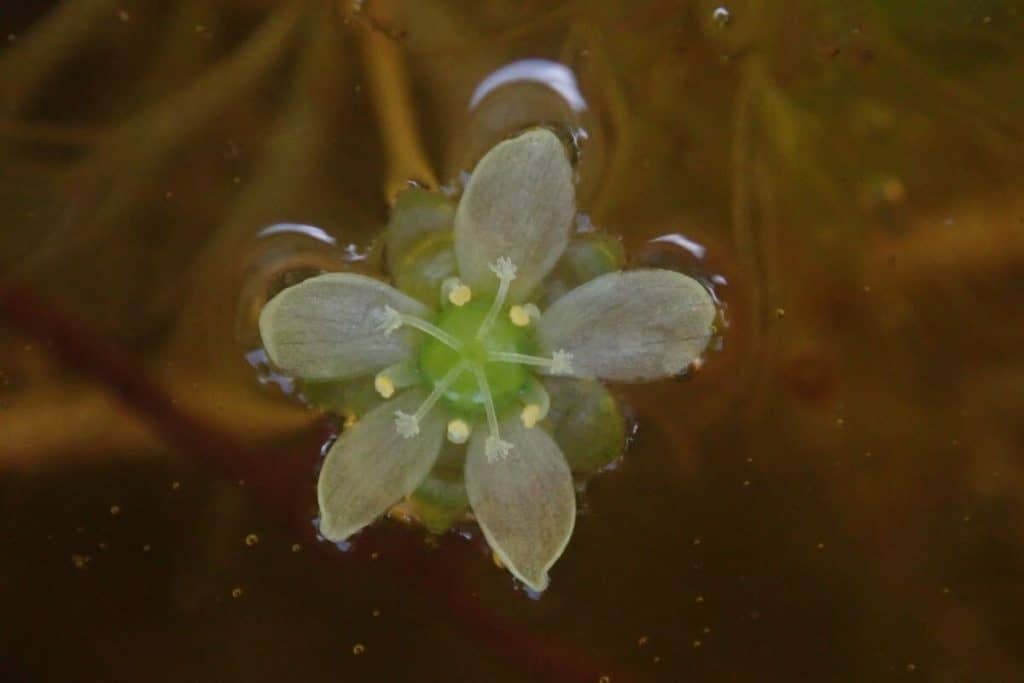
The Waterwheel is basically the Venus Flytrap of the water; this is because the plant captures small aquatic invertebrates using traps similar to those of the Venus flytrap.
And like the Venus Fly Trap, these traps snap shut once their hairs are triggered by an incoming insect.
This species is native to Europe, Africa, Asia, and Australia.
8. Moccasin Plant (Cypripedium acaule)

The Moccasin plant was discovered in Southwest Australia, and it also resembles a Pitcher Plant.
It has the same shape and sweet-scented nectar which it uses to lure prey into its moccasin-shaped pitchers, where the insect is slowly digested.
It has translucent cells that cause insects to tire themselves while trying to escape.
9. Brocchinia reducta (Brocchinia Reducta)

Brocchinia reducta is native to southern Venezuela, Brazil, Colombia, and Guiyana. It is one of a few carnivorous bromeliads.
It forms a water-storing cup with its tightly-overlapping leaves. The leaves surrounding the cup of the plant are coated with loose, waxy scales, which are reflective of ultraviolet light, which draws insects to them.
The water in the cup secretes a sweet scent that also lures in unsuspecting bugs.
10. Trumpet Pitchers (Sarracenia)
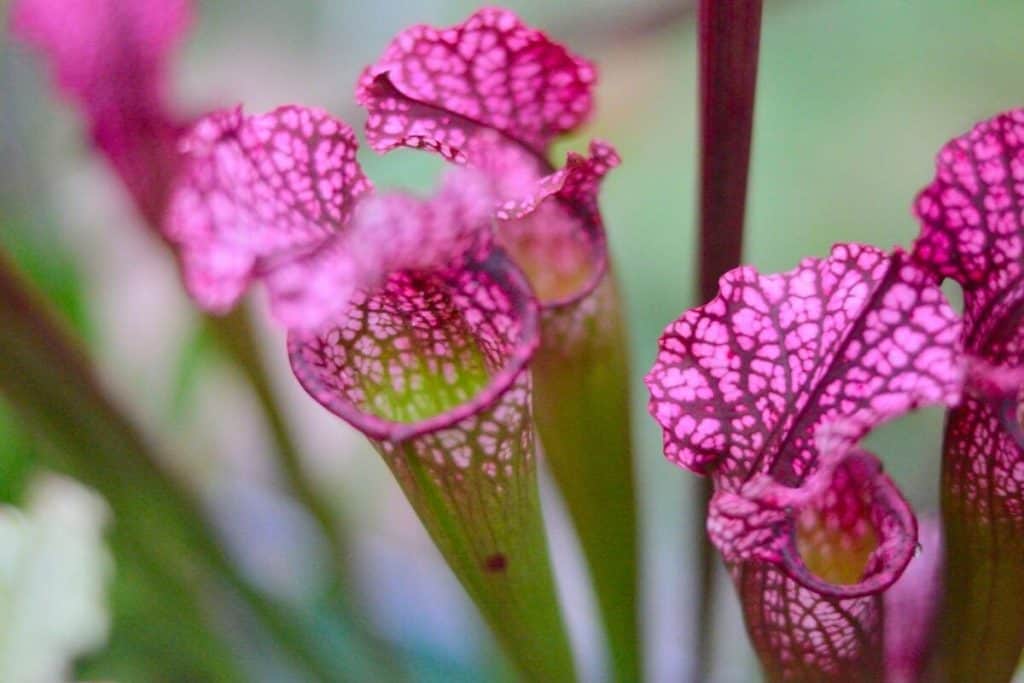
Trumpet Pitchers, also known as the Yellow Pitcher Plant, is a genus comprising 8 to 11 species of North American pitcher plants.
It belongs to the family Sarraceniaceae, and it is found in northern Florida and the southern parts of Georgia and Alabama.
The plant's leaves are funnel-shaped, which helps them to trap insects. When unsuspecting insects fall inside, they die and are digested by the plant with proteases and other enzymes.
Read Also: Different Types Of Lilies
11. Rainbow Plant (Byblis)
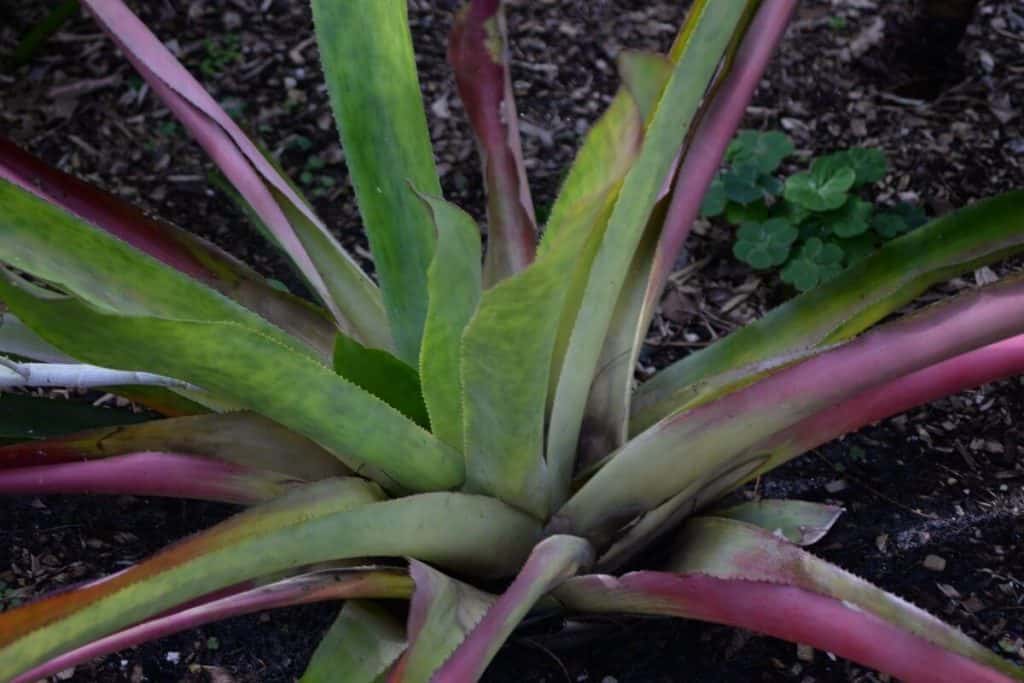
It is termed Rainbow Plant because of the attractive appearance of its mucilage-covered leaves in the presence of bright sunshine.
It is native to western Australia, often found in and around swamps and seasonally wet areas.
Other types of carnivorous plants that are worth mentioning include:
- Powdery Strap Airplant (Catopsis berteroniana)
- Albany Pitcher Plant ( Cephalotus follicularis)
- English Sundew (Drosera anglica)
- Giant Sundew (Drosera gigantean)
- Sweet Pitcher Plant (Sarracenia rubra)
- Lance-leaved Sundew (Drosera Adelae)
- Splendid Pitcher Plant (Nepenthes Edwardsiana)
- Alpine Butterwort (Pinguicula alpine)
- Fly Catcher Bush (Roridula gorgonias)
- Beaked Trigger Plant (Stylidium adnatum)
How To Care For Carnivorous Plants
According to the Missouri Botanical Garden:
Carnivorous plants are not easy to care for -- and they require very complex cultural conditions to thrive.
Carnivorous plants survive better in bog gardens that can imitate their natural habitat in the wild. They need an acidic muck that is very rich in humus.
While some carnivorous plant species can endure part shade, many of the plants grow better in full sun. For example, the yellow pitcher plant droops without sufficient sunlight.
Interestingly, carnivorous plants can also be grown in containers if you cannot create a bog. Use a combination of peat moss and sand if you will be growing them in containers.
That said, below are other key guidelines to follow in order to protect your carnivorous plants from destruction while also ensuring their attractiveness remains intact.
Carnivorous Plants Light And Moisture Requirement
Carnivorous plants are best suited for bog gardens that imitate their natural habitat in the wild; they must be grown in humus soil.
The growing medium should be wet but not watery. The plant should be kept under direct sunlight; this is because many carnivorous plants prefer full sun. The yellow pitcher plant, for example, droops without enough sun.
If creating a bog garden is not possible in your home garden, you can also consider growing carnivorous plants in containers using sand and peat moss.
Keep the containers in a sunny spot on top of a water tray so that the soil remains thoroughly moist at all times.
Read Also: 15 Types of Lithops Plant
Temperature Requirement
Most carnivorous plants go dormant in the fall when temperatures drop low enough. So, therefore, they thrive in temperatures 50 degrees Fahrenheit and above.
Outdoors, you should apply a layer of pine needles in order to protect carnivorous plants during the cold winter months.
If your carnivorous plants are in containers, bury them in the fall, so the top of the container is even with the surface of the soil, then cover the plant with sawdust or leaves.
For certain dormant carnivorous plants in containers indoors, do well to moderate the amount of water they receive.
Frequently Asked Questions
What is a protocarnivorous plant?
A protocarnivorous plant (sometimes also para carnivorous, sub carnivorous, or borderline carnivore), according to some definitions, traps and kills insects or other animals but lacks the ability to either directly digest or absorb nutrients from its prey like a carnivorous plant.
What are the three most common types of carnivorous plants?
Venus Flytrap (Dionaea Muscipula) This is perhaps the most famous carnivorous plant, Monkey Cups (Nepenthes), and Cobra Lily (Darlingtonia Californica).
How many carnivorous plants are there in the world?
There are currently around 630 species of carnivorous plants known to science.
What type of carnivorous plant can eat a human?
No carnivorous plant in existence is a direct threat to the average human being. But one of the plants considered to be responsible for rumors of man-eating flora is something known as Amorphophallus Titanum or The Corpse Flower.
Are pineapples carnivorous?
Pineapples are tropical carnivorous plants. Pineapples produce a protein called bromelain, which can break down other proteins into acids. Pineapples can only eat small insects since they are not built to trap larger animals.
What is another name for carnivorous plants?
Carnivorous plants are also called insectivorous plants.
Conclusion | Carnivorous Plant Varieties
We have now listed some of the most popular types of carnivorous plants, their brief features, and how to care for them.
It is now left for you to decide on which of them would be more appealing to you and your home. Step out now and get that beautiful carnivorous plant and add more color to your home.
It is worthy of note that carnivorous plants consist of about 630 species, and so there are still a whole lot more that were not mentioned in the article.
Related Post: Different Types Of Palm Trees




